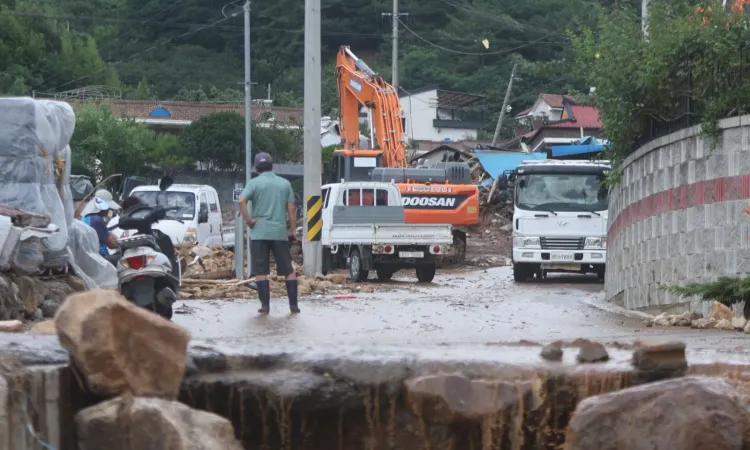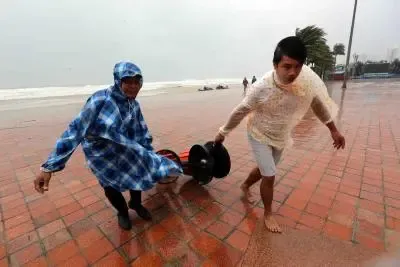What Are the Impacts of Heavy Rains and Landslides in South Korea?

Synopsis
Key Takeaways
- Eighteen lives have been lost due to heavy rains and landslides.
- Nine individuals are still unaccounted for.
- Over 14,000 people have fled their homes.
- Significant property damage has been reported.
- The Army is actively involved in recovery efforts.
Seoul, July 21 (NationPress) Eighteen individuals have tragically lost their lives, and nine people are still missing in South Korea following a series of severe rainstorms and landslides that began to batter the nation last week, according to a government report released on Monday.
As of 9 p.m. Sunday, the fatalities include 10 individuals in the southern county of Sancheong, two in the northern county of Gapyeong, and two in the western city of Seosan, as detailed by the interior ministry.
Among the missing, four are reported in Sancheong, and another four in Gapyeong.
Since the onset of the heavy rainfall last Wednesday, over 14,000 residents have sought refuge in shelters across 15 key cities and provinces.
The extent of property damage is substantial, with 1,999 incidents reported at public facilities and 2,238 incidents at private establishments as of 6 p.m. Sunday.
The state weather agency has predicted further rainfall continuing through Monday morning in South Jeolla Province, South Gyeongsang Province, and the southern island of Jeju.
Rainfall is also expected to commence at 9 a.m. in North Jeolla Province and North Gyeongsang Province, while the capital region and the provinces of Gangwon and Chungcheong are forecasted to experience rain in the afternoon, as reported by Yonhap news agency.
All heavy rain advisories have now been lifted, and the government has reduced the warning level from 'serious' to 'attention' as of Sunday.
The South Korean Army has mobilized approximately 2,500 military personnel and equipment to assist with recovery efforts in the areas severely impacted by the torrential rains, according to a Monday statement from the armed forces.
Since Thursday, about 2,500 emergency responders and 20 pieces of equipment have been deployed in the southwestern city of Gwangju, as well as parts of South Chungcheong Province and South Gyeongsang Province.
As the heavy rains and landslides continue to take a toll, the government focuses on recovery efforts, including repairing homes and businesses damaged by flooding, removing debris, and organizing household items, with the Army committed to ongoing assistance.









